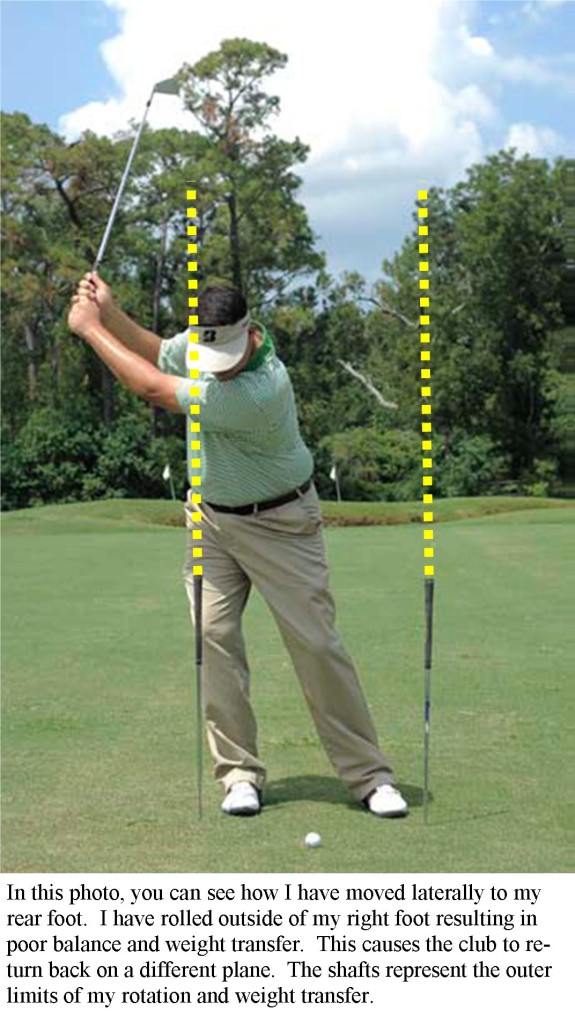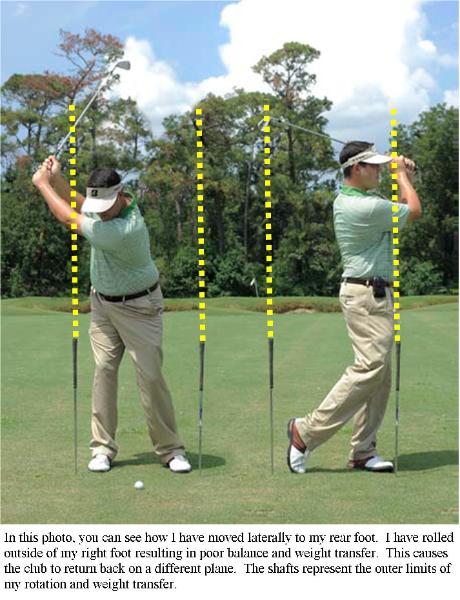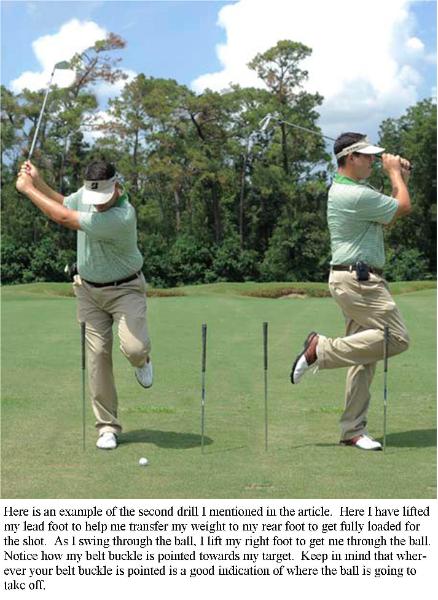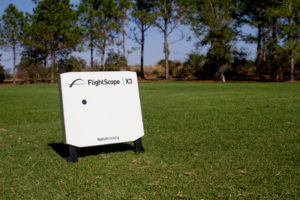So far in my past articles, we have learned how to improve distance and accuracy by developing a sense of control using our large muscle groups to work more dominantly in our golf swings, and we have also learned how to regain back confidence in our bunker play and shave strokes off of our score by practicing the proper technique out of the sand. In this article we will take a closer look at the golf swing through dynamic balance to help you produce a proper plane and release the club head more consistently.
When studying any sport, it is hard to overlook balance as playing an important role. Think of taking a ball in your dominant hand and imagine that you are going to throw it a long distance using a sidearm throw. The body should coil and the weight naturally shifts to the rear foot. Now the body has loaded for action like a pitcher or a quarterback. When you complete the throw, look and feel how your body has transferred its weight to the lead foot. In every throwing or striking motion, maximum power is achieved when the motion is directed to the target by transferring the weight from the rear foot to the lead foot. The weight transfer is identical in the golf swing. Many golfers never stop to think about how important their footwork and weight transfer really are. As a result, they attempt to hit the ball using only their arms or a reverse weight transfer from the lead foot to the rear; what I call a recoil effect. Maintaining a proper balance provides a base for the rotation of the body and the swinging of the arms adds momentum to the total movement, and allows the body to get into position to hit the golf ball with the club head traveling in the right direction and angle into the ball. The weight transfer is a basic key, fundamental aspect of the golf swing; you either do it or you don’t. Make sure that when the weight has reached the rear foot (on a right-handed golfer) that the right leg is still flexed and that weight is not outside of the foot. Without a proper weight transfer and balance, golfers will not consistently return the club on the right plane and the release of the club head will be diminished. As I said before, power comes from using your larger muscles, but this must be in unison with the rest of the moving parts of the golf swing.
To work on your balance, get a dry erase marker and a full length mirror. On the mirror, draw one line down the middle of your body and two lines about 6-8 inches on each side of the middle line. Take a few swings in front of the mirror with a club if space is available, making sure you shift your weight to your rear foot and then to your lead foot. The lines in the mirror are there to give you visual feedback, letting you know if you have shifted your weight completely to the rear foot and forward to the lead foot.
Another drill is to take the club back and lift your lead foot off the ground completely, making sure that your rear knee is still flexed, and that you do not roll outside of your rear foot. Then start your rotation back through the ball and lift your rear foot off the ground to get all of your weight to your lead side, finishing with a straight back and full rotation through the ball.
In these drills, make sure that you do not make a lateral or “slide” movement back and through, but a rotation. Hopefully by obtaining better balance and a proper weight transfer, you will hit more consistent shots by returning the club on the right plane and angle to the ball.





